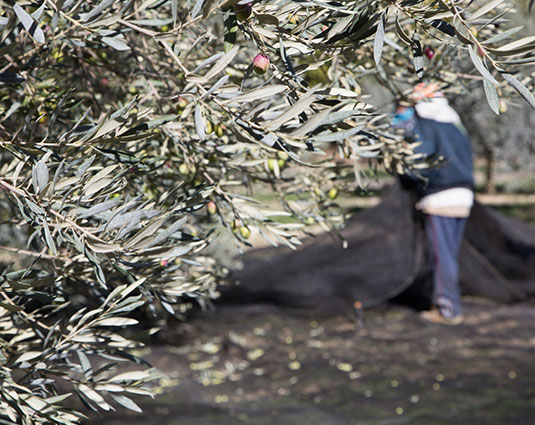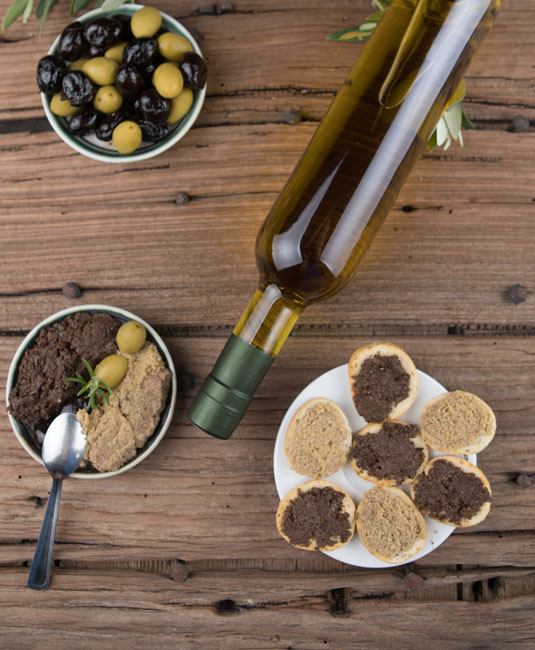
The olive, one of the treasures of Provence
Nuggets of gold in Vaucluse
Growing olives is a tradition in Provence, linked to the land and the sunThe trees are covered in fruits which are more or less oval-shaped depending on the variety, and with a colour palette ranging from a light green to an intense black when ripe. Every autumn, towards mid-October, a curious ritual plays out at the gates of the oil mill: the long convoy of freshly-picked olives make their way towards the press. Whether from the olive tree in our garden or from an olive grove, the olive, emblematic of Provence and the Mediterranean region, flavours our dishes and our salads.
Olives and olive oil: the yellow gold of Provence
Olives have been a central part of Provence’s culture for centuries and symbolise the richness of nature
They are not only a fundamental ingredient in Provençal cuisine, but also an element of conviviality, to be enjoyed during an aperitif or in the form of a tapenade spread. Traditional local recipes, such as ratatouille or tian dishes, are infused with the flavour and taste of olive oil, highlighting its essential role in the local cuisine.

Would you like to know more about olive oil and how it is produced?
Many of our oil mills open their doors to the public whatever the season (with lovely adjoining shops that make you want to buy everything in them).
The perfect spot to discover this culture and know-how that has existed since time immemorial is in the Domaine de la Royère olive oil museum , in Oppède. Here you travel back through the ages, learning all about the objects and tools used by olive growers but above all their art in producing delicious, aromatic olive oils that are inseparable from our Provençal cuisine!
So you too should set off along the olive routes of Provence


Did you know?
It takes 5 kg of fruit to make one litre of olive oil and only the olives on the tree are gathered, never those that have fallen on the ground

Testimony
It is in Saint Saturnin lès Apt, a beautiful village in Luberon, that, for 4 generations, we have been producing our renowned olive oil. The Aglandau olive, a local variety, sits at the heart of our production. In order to expand the olive groves, successive generations of farmers from this territory have planted new trees. This variety of olive is known for its smooth oil, which has a great aromatic richness and an excellent shelf life. We desire, through our hand-made family production, to be a reflection of the land between Luberon and Ventoux. Our first vat of organic olive oil dates from 2009. The entirety of our production is labelled Huile d’olive de France
Experiences on an olive theme
Tours and workshops
The tours and workshops offer an original opportunity to gain a better understanding of olive production in Vaucluse. Learn the secrets of the harvest directly from the producers, visit the oil mills and get explanations on every stage in the production process… These are just some of the many different experiences you can have during your autumn trip to Vaucluse. This is also a great way to appreciate the craftsmanship that goes into creating the rich flavours in every single bottle of olive oil, enabling you to fully appreciate this Provençal “nectar”.

Tapenade, the Provençal caviar
A key ingredient in the culinary heritage of our region, olive oil becomes rich and grainy when mixed with the pulp of its fruit in a tasty tapenade.tapenade.
An emblematic Provencal recipe, tapenade gives pride of place to southern foods and the sea with its black or green olives, capers and anchovies… Besides, did you know that «tapena» means «caper» in Occitan? Into the kitchen! Peel and mince the garlic cloves. Drain the anchovies and pat them dry, then cut into small pieces. In a mortar, crush and mix everything. Then incorporate the thyme and the olive oil, gently mixing always in the same direction. Season with pepper but not salt (because of the anchovies). It’s ready!

Ingredients
Pour 500 g de tapenade environ :
For about 500g of tapenade:
350 g olives
3 garlic cloves
100 g capers
100 g anchovy fillets
150 ml olive oil
2 pinches of thyme
pepper– lemon juice

Tips on how to best enjoy olive oil
Raw oil tasting
Tasting raw oil is the preferred method because it reveals the subtle nuances of flavours and aromas.
Step 1: inhale the fragrance of the oil so as to appreciate its different aromas.
Step 2: place a sample of the oil in a glass and warm the glass briefly in your hands
Step 4: swirl the oil around your mouth (yes, just like wine), paying attention to the fruity, bitter and spicy notes, which are the distinctive signs of the quality of the olive oil.
A tip from a pro: use tinted glasses so that the colour of the olive oil doesn’t affect your judgement! Between each tasting, take a bite of a green apple.

How about an olive oil brioche?
The recipe for a typical Provençal brioche
Mix all the ingredients, finishing with the yeast, to create a supple and homogeneous dough. Then shape the dough into a ball and place into a mixing bowl. Cover and leave for three hours at room temperature. Next roll the dough into small balls and flatten with a rolling pin until 2cm thick, making sure to get rid of any air bubbles. Then shape the dough into whatever shape you desire (for example, with 2 to 3cm slashes as shown in the photo). Leave to rise for another hour before placing into a hot oven at 150°c. Halfway through cooking, brush the dough with an egg wash. Cooking time: about 15 minutes. Top tip: Placing a bowl of water in the oven boosts the rise of the dough 🙂

Ingredients
1 kg flour
250 to 300 grams olive oil
200 to 300 grams melted butter
4 to 6 eggs/ a pinch of salt
200 to 300 grams sugar
50 grams baker’s yeast
1 glass of tepid water









